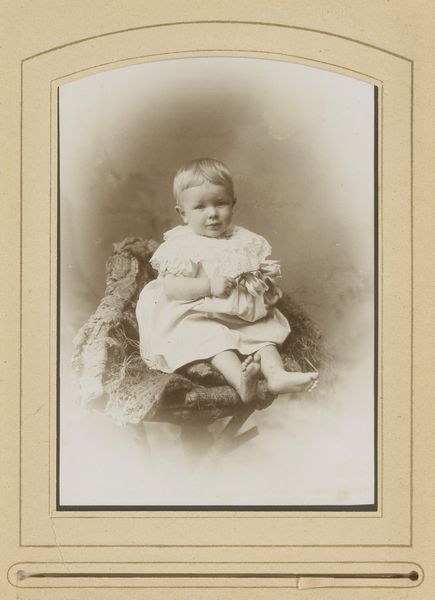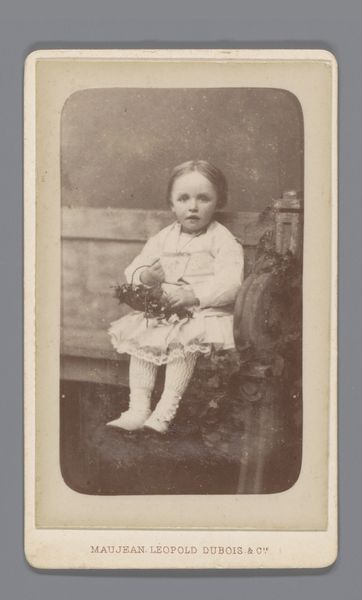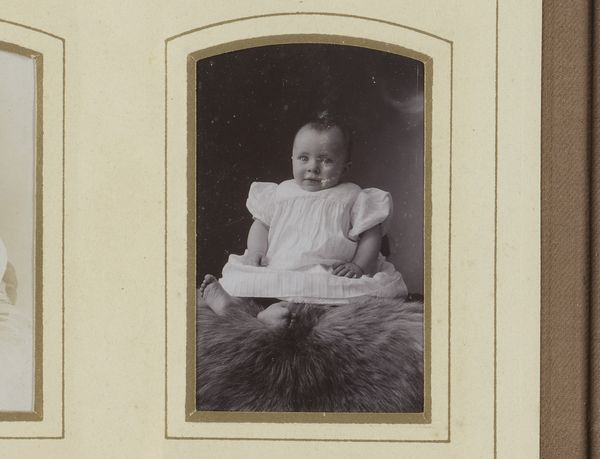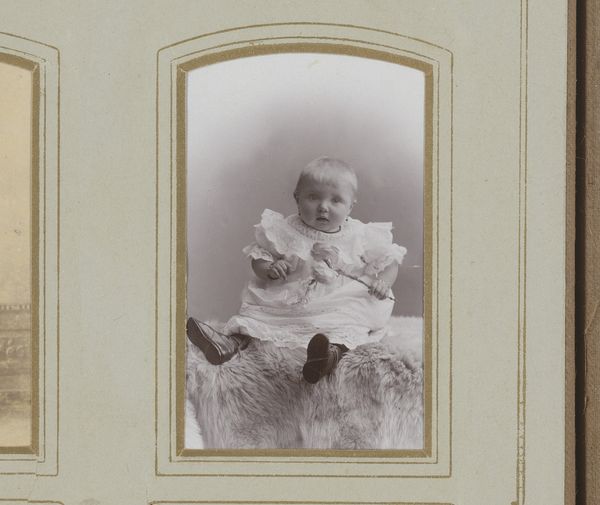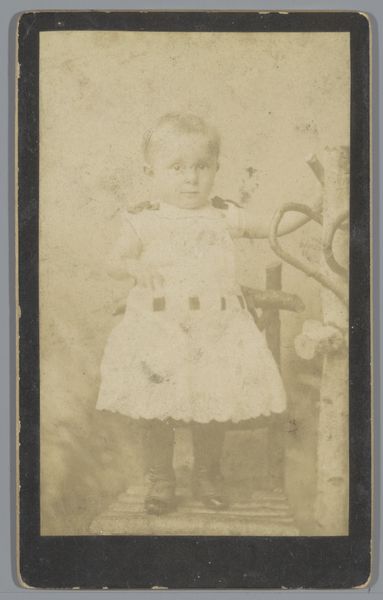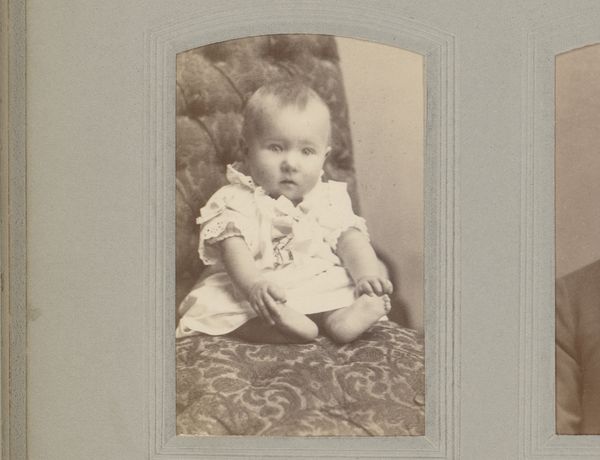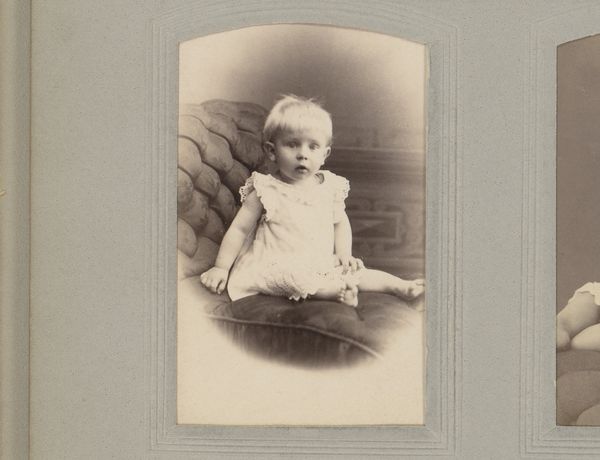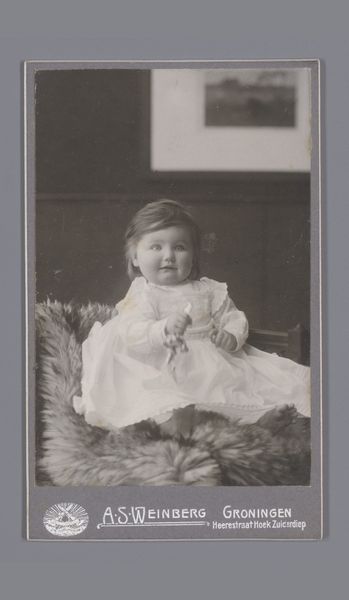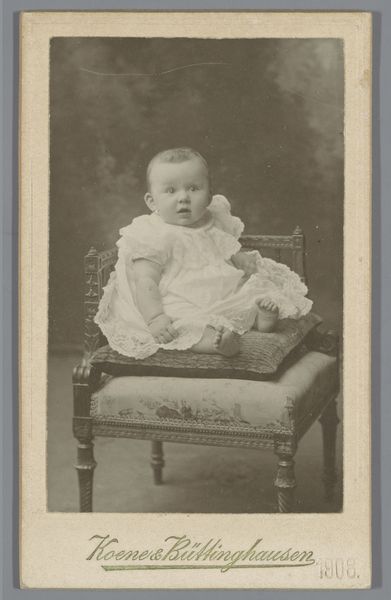
#
neutral colours
#
aged paper
#
photo element
#
white palette
#
framed image
#
neutral colour
#
white focal point
#
photographic element
#
photo library
#
tonal art
Dimensions: height 136 mm, width 98 mm
Copyright: Rijks Museum: Open Domain
Curator: What we have here is a piece titled "Portret van een zittende baby" by Guillame Maximilien Zimmermann, dating from 1897 to 1902. Editor: My first thought? It’s incredibly sweet and formally quite still; the soft greyscale palette enhances the feeling of old memories. Curator: Absolutely. Infant portraiture became increasingly common as photography became accessible to the middle class. We have to consider the shift from painted portraits, typically commissioned by the wealthy to affirm their status, to photographic portraits made accessible to a wider public audience seeking to capture milestones. Editor: That is interesting, and when you mention it, I immediately observe how the composition and the setting is so crucial to achieve the proper "bourgeois" respectability and formality. Observe how the child's dress and fluffy setting soften an otherwise rigid composition. Curator: Yes, photography, particularly portraiture, walked a tightrope, seeking to emulate the grandeur of painting while asserting its own unique form of democratic image-making. The framing here even mimics a traditional painting frame. Editor: You can say that the material quality supports the interpretation of "democracy". There is this contrast of photographic realism against the trappings of wealth and power, made from humbler materials, giving a powerful social message. Curator: Precisely. Consider the role institutions like the Rijksmuseum play in preserving and displaying photographs like this, giving new life and meaning. The simple act of framing elevates it, encouraging visitors to contemplate its place in a broader cultural narrative. Editor: And from a more structural point, it invites the contemporary observer to consider photography's formal evolution; here, the play of soft light and shadows is masterfully deployed to add subtle depth and perspective to a naturally monochromatic art object. Curator: Looking at Zimmermann's work provides an insight into shifting social values regarding childhood, the rise of photography as a democratizing force, and the institutional frameworks through which we understand and appreciate art today. Editor: True. It’s a surprisingly rich image to decode—simple on the surface, but conceptually complex beneath!
Comments
No comments
Be the first to comment and join the conversation on the ultimate creative platform.
